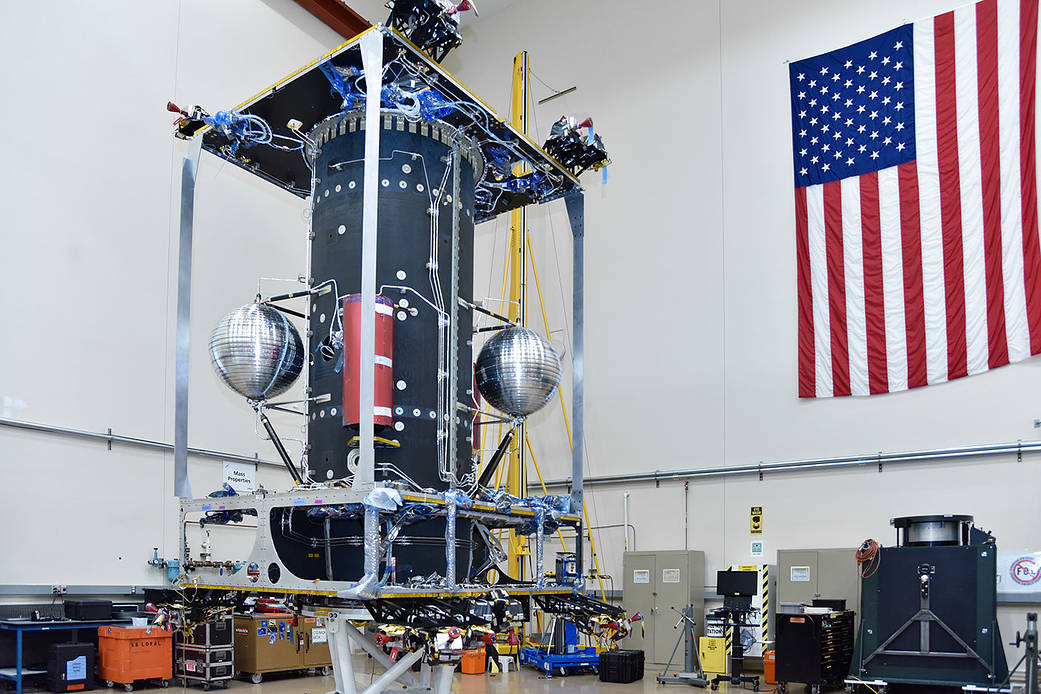Image credit: Maxar Technologies
NASA is one step closer to robotically refueling a satellite and demonstrating in-space assembly and manufacturing thanks to the completion of an important milestone.
In April 2021, NASA and Maxar Technologies successfully completed the On-orbit Servicing, Assembly, and Manufacturing 1 (OSAM-1) mission spacecraft accommodation Critical Design Review (CDR). This milestone demonstrates that the maturity of the design for the OSAM-1 spacecraft bus is appropriate to support proceeding with fabrication, assembly, integration, and testing.
OSAM-1 will, for the first time ever, robotically refuel a U.S. government satellite not designed to be serviced. The spacecraft will consist of a servicing payload, provided by NASA’s Goddard Space Flight Center in Greenbelt, Maryland, with two robotic arms that will be attached to the spacecraft bus. The bus will also incorporate a payload called Space Infrastructure Dexterous Robot (SPIDER) that will demonstrate in-space assembly and manufacturing. SPIDER will use a third robotic arm to assemble a communications antenna and an element called MakerSat built by Tethers Unlimited to manufacture a beam. The spacecraft bus and SPIDER are being built by Maxar Technologies.
This image, taken by Maxar in their Palo Alto, California, facility, features the OSAM-1 spacecraft bus under development. The 14-foot-tall bus will provide OSAM-1 with power and the ability to maneuver in orbit. To make these maneuvers possible, inside the main cylinder are two large bi-propellant tanks, and the upper and lower deck of the spacecraft feature thrusters. The two silver spheres are filled with mono-propellant fuel that will be used to provide OSAM-1’s target client satellite, Landsat 7, with more fuel to demonstrate that robotically refueling a satellite is possible.
Upon completion of the OSAM-1 spacecraft bus and related testing at Maxar’s facilities in mid-2022, it will be sent to Goddard. NASA will complete the integration and testing of the OSAM-1 components, including the spacecraft bus, servicing payload, and SPIDER, in preparation for launch.
OSAM-1 is funded by NASA’s Space Technology Mission Directorate through its Technology Demonstration Missions program.



























